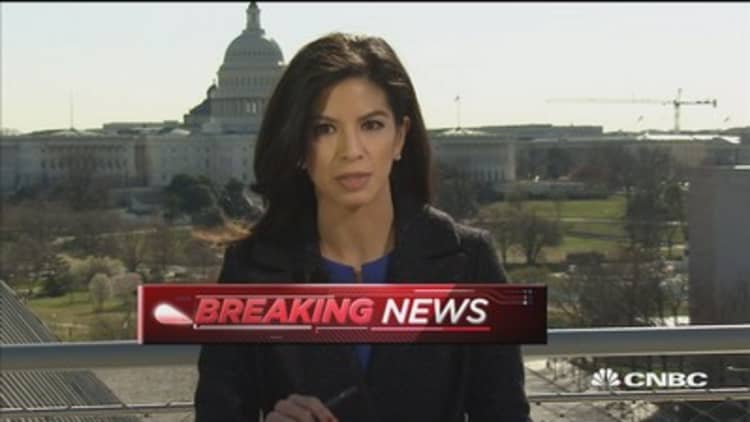
The solution to many of America's infrastructure problems could lie in the hands of tech companies.
Venture-backed HiBot USA, which recently advanced from "stealth" production mode, hopes to use machine learning and artificial intelligence to solve an aging pipe problem.
More than 1 million miles of pipes will reach the end of their lifespan within the next 30 years, according to data obtained from the American Water Works Association, costing more than $1 trillion to replace. Those pipes must carry more than 40 billion gallons of water per day to households and businesses, yet there are an estimated 240,000 water main breaks per year nationwide, the group has found.
America tends to focus "around dams, road and bridges," Lars Stenstedt, HiBot's vice president of business development, said in an interview with CNBC. "But nobody can go 24 hours without clean water."
On Thursday the American Society of Civil Engineers released its 2017 "infrastructure report card," giving the nation's overall infrastructure a grade of D+ and U.S. drinking water a D, unchanged from the group's previous report four years ago.
"What happens when we have water line breaks is businesses shut down, it's an inconvenience to customers, and all these things cost Americans money," ASCE's Chairman Greg DiLoreto said in an interview with CNBC. Technology will "absolutely" play a role in solving the U.S. infrastructure problem, he said, and there is already evidence of this — particularly with gadgets monitoring drinking water and pipes.
The history and future of U.S. pipes
Many of America's pipes were constructed in the early- to mid-1900s, with a lifespan of somewhere between 50 to 150 years, HiBot Chief Executive Takashi Kato told CNBC in an interview.
"Pipes are a major problem in America because the oil and gas markets are so heavily regulated, but the water isn't," Kato said. "If the problem is bigger, the opportunity [for solutions] is better."
Kato came to the U.S. and began working on HiBot after he founded a Japanese robotics startup, Schaft, which was later acquired by Google in 2013.
HiBot is essentially a robotic system — or an "amphibious pipe robot," as the company calls it — that compiles data on weather, soil and traffic, and is then able to predict pipe issues before they happen.
Once inside a pipe, HiBot's robot will do things like measure the thickness of the pipe's wall and will then rank the overall structure on a grading scale from A to F. The robot also comes with a camera in the front, providing engineers a helpful visualization of what they're working with.
HiBot has made it clear that its goal is not to replace all of America's pipes, but to offer necessary data to determine which pipes need more repair than others.
Koto points out that the U.S. is replacing its pipes about four times as slowly as other countries, largely because nobody knows which pipes need to be replaced first and engineers are relying on prediction models that can easily fail.
"From the angle of data, nobody is working together," Kato said.
Using New York as an example, which has more than 6,000 miles of pipes, HiBot's Stenstedt discussed how former Mayor Mike Bloomberg set up a commission in the early 2000s to replace 80 miles of pipes per year. Through 2014, though, the city was only replacing about 27 miles, Stenstedt said, "losing a lot of water."
Even if Americans had "all the money in the world," there are still logistical issues involved in digging into the ground and ripping out a pipe in the middle of San Francisco streets, he added. "We need a good and intelligent replacement system, and to focus our budget on those pipes that will only make it 60 to 80 years," versus those that could last closer to 150 years, Stenstedt said.
California's drought dilemma has made the state the perfect spot for HiBot to begin to test its robots, and the company said it hopes to roll out products nationwide later this year.
The San Jose-based company, which is a subsidiary of Japanese company HiBot Corp, has raised $3.6 million from venture investors so far, according to Crunchbase.
HiBot's Stenstedt said President Donald Trump's proposal to spend $1 trillion to fix U.S. infrastructure is a good thing, but "where that money is going to be spent … in intelligent systems" is key. "Clean water ain't free," he said.
Moving forward, technology will play a role in all 16 infrastructure categories, ASCE's DiLoreto emphasized, adding that he's been "encouraged" by President Trump's latest "bold" remarks on spending. "It's time for people to put their money where their mouth is."


